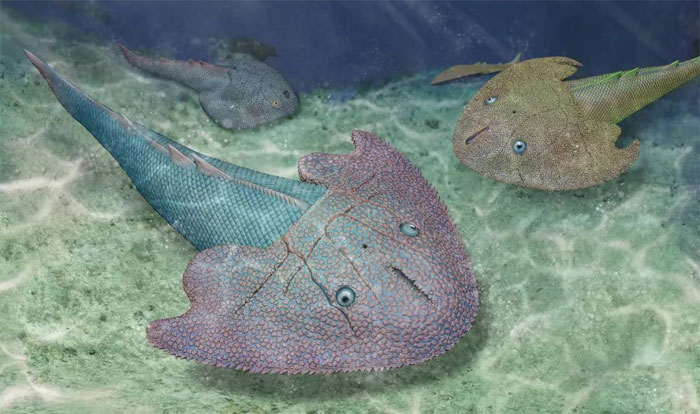The bizarre triangular-headed fish is a creature that is in an evolutionary transition from jawless vertebrates to jawed vertebrates.
Named Nochelaspis maeandrine, this “strange fish” once swam throughout southern China and northern Vietnam during the Devonian period. The first recorded specimen was a piece of skull bone resembling a perfect triangular shield, discovered in the Xishancun Formation in Yunnan Province, China, in 1987.

Portrait of the Devonian “strange fish” – (Photo: Dinghua Yang).
According to Sci-News, recently, two additional fossil specimens of the “strange fish” were found in China, with dating results indicating they are approximately 415 million years old.
“They are among the groups of enigmatic jawed vertebrates that help us understand the transition from jawless vertebrates to jawed vertebrates” – Dr. Min Zhu from the Institute of Paleontology and Vertebrate Paleontology, Chinese Academy of Sciences, the lead author of the study, stated.
The newly excavated specimens – two other triangular shields, still bearing skin patterns and fringe spines – have provided scientists with further insights into the underlying body structure.
This includes a flat, pear-shaped abdomen with six pairs of symmetrical bronchial openings on either side, a structure present in many later jawed fish species, even modern fish like sharks. The creature’s mouth is located at the front end of the triangular shield. The “strange fish” inhabited sandy or muddy substrates on the quiet ocean floor.
The fossils are considered particularly significant for paleontology, as they represent a species “in between” on the evolutionary tree, as ancient ocean fish gradually evolved from jawless to jawed forms.
These details have allowed the research team to reconstruct the mysterious creature in a recent publication in the scientific journal Vertebrata PalAsiatica.


















































